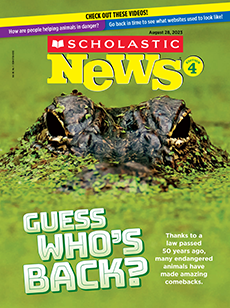1. Based on the article, what happens at a powwow?
Based on the article, Native peoples play drums, dance, sing, eat traditional foods, and tell stories with family and friends at a powwow.
(RI.4.2 Main Idea and Key Details)
2. Why does the author use the subheading “Stolen Land”? What details in that section help you understand the subheading’s meaning?
The author uses the subheading “Stolen Land” for this section because the section is about how English settlers took over the land where Indigenous peoples had lived for thousands of years. The author illustrates the subheading’s meaning when she writes, “By 1677, English colonists controlled most of the riverfront. The Nansemond had been forced to move to other areas.”
(RI.4.1 Text Evidence)
3. According to the sidebar, “A Long Wait,” what did the Indian Citizenship Act do?
According to “A Long Wait,” the Indian Citizenship Act, passed on June 2, 1924, granted citizenship to all Native Americans born in the U.S.
(RI.4.7 Text Features)
